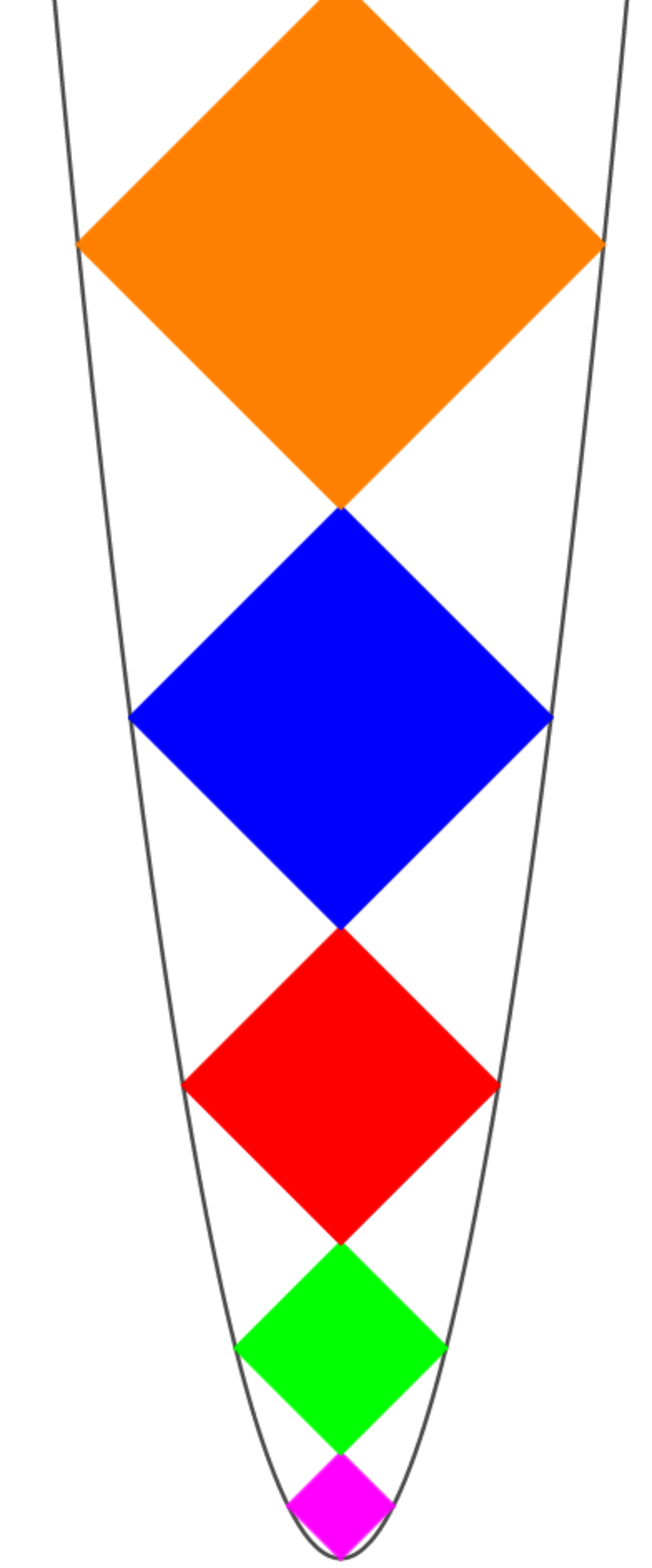Quick and cute summer Sangaku #14
The diagram shows a parabola in which an infinite chain of square is inscribed. The smallest square has one of its vertices tangent to the extremum point of the parabola.
- Question : We denote the area of the first square (the smallest)
- Evaluate :
- The answer can be written as
-
Evaluate

The answer is 10.
This section requires Javascript.
You are seeing this because something didn't load right. We suggest you, (a) try
refreshing the page, (b) enabling javascript if it is disabled on your browser and,
finally, (c)
loading the
non-javascript version of this page
. We're sorry about the hassle.
One very easy way to solve this problem consists in using coordinate geometry.